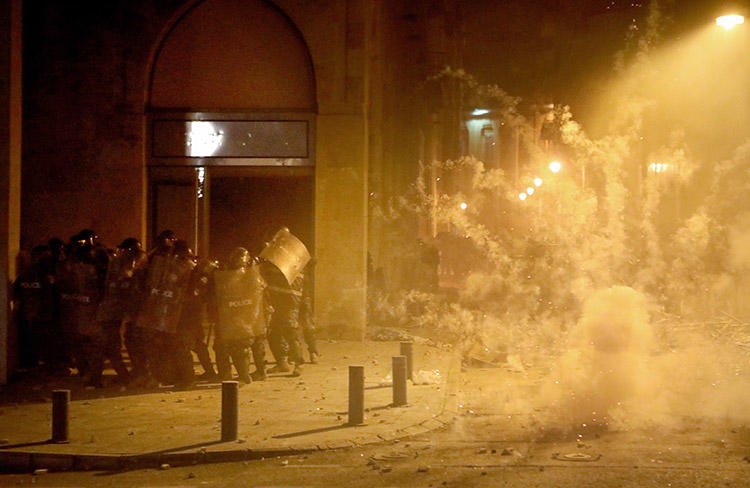Protests in Lebanon have become more violent in recent weeks, with approximately 500 protesters and members of the security forces injured, according to reports. Lebanese authorities have used water cannon, batons, rubber bullets and, on occasion, fired teargas directly at protesters, according to reports. Protesters have thrown projectiles including molotov cocktails, stones and fireworks, directed lasers at security forces, used aerosol cans as flame throwers, burned tires and tree branches, and used metal bars and sticks to smash windows, according to reports. CPJ has documented how journalists have been harassed, attacked and detained while covering protests, or had equipment broken.
With continuing economic and political uncertainty in the country, and January 24 marking the 100-day anniversary of the initial protests, demonstrations are likely to continue, according to news reports. Beirut has been the epicenter of the largest protests to date, with Nijmeh Square and Martyrs’ Square notable flashpoints. Other protest locations that journalists should be aware of include the cities of Tripoli, Saida, Tyre, and Zahle Nabatieh, and the towns, districts and regions of Zouk Mosbeh, Jal el Dib, Zahle, Nabatieh, Bekaa Valley, and Jbeil.
Journalists planning to cover the protests should:
- Plan all journeys around the country in advance and have a contingency plan in place. Movement around Lebanon can be affected at short notice due to protesters blocking highways including the main ring road around Beirut, the Batroun highway, the Byblos-Tripoli highway, and the Furn el-Chebbak highway. Blockades have been used on roads leading to Minya, Beddawi and Khalda.
- Bring USD cash with you and do not rely on ATMs. Currency restrictions are in place throughout Lebanon
- Charge electrical devices at every opportunity: electricity shortages and rationing have struck over the past few months
- Bring a well-stocked first aid kit
- Ensure you have personal protective equipment (PPE) on hand at all times, including a full face respirator in case of tear gas. A helmet and bullet proof vest are advisable. Border officials generally allow journalists to bring body armor into Lebanon
- Engage a local fixer and ensure you have proper accreditation and all necessary permits
- When covering demonstrations, maintain situational awareness at all times and stay in close proximity to shelter, such as a building or structure with a roof
- Always have an emergency exit route planned and keep to the periphery of the crowd
- Be aware of increased security and the potential risk of anti-Western sentiment following the U.S. killing of Iranian General Soleimani
- Always use discretion when filming, especially around sensitive state sites and infrastructure
- Always try to work with a colleague and have a check-in procedure with your base, particularly if reporting from protests
- Ensure all sensitive data and messages are regularly backed up and wiped from your devices, and ensure your digital devices are secure in advance of travel. CPJ’s digital safety kit has steps and resources to protect you and your team
CPJ’s online Safety Kit provides journalists and newsrooms with basic safety information on physical, digital, and psychological safety resources and tools, including on covering civil unrest and elections.
